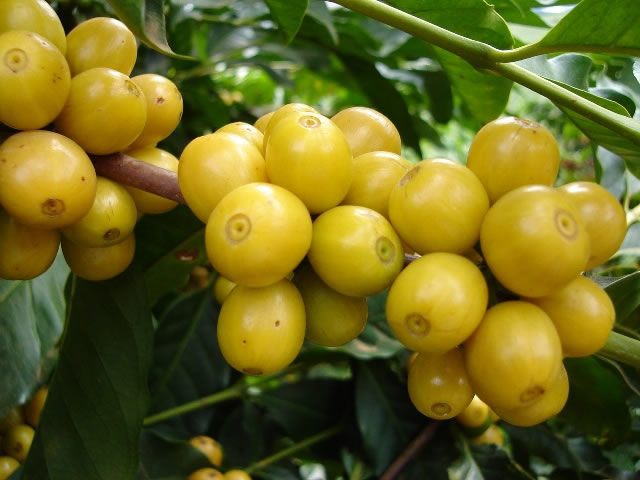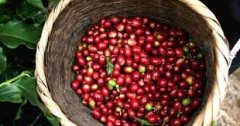Single producing area Yunnan coffee bean matching skills Italian matching skills, formula records
For professional baristas, please follow the coffee workshop (Wechat official account cafe_style)

Roasting each coffee with different roasting degrees, testing the flavor of each roasted sample in cups, and carefully understanding the cup-side flavor characteristics of each bean is a prerequisite for bean blending. Coffee should be tasted from when it is hot until it cools completely. The vivid memory of these flavor characteristics is the key to the process of preparing formula beans. Like a chef, bean dispensers can be said to be a craft according to the ability to match a variety of coffees with different flavors. Yunnan coffee bean blending
When mixing mixed beans used in brewed coffee, unlike Espresso beans, you can find out the direction by mixing different proportions of brewed coffee. In other words, it is relatively simple to mix mixed beans for brewed coffee. Through the implementation of these beans, we can sum up several basic principles. First, mix only two or three kinds of coffee. More kinds of coffee will only complicate things. Complexity won't do much good. I know some coffee is mixed with nine different coffees, but as a gimmick, I don't see the benefits of mixing so many kinds of beans. I don't believe that the average coffee expert, or a few consumers, can perceive the effect of the last of the nine beans. The second principle is to increase the proportion of each coffee, accounting for at least 15% of the formula, so that the effect of adding each cup of coffee can be more easily detected, while using too little can hardly have any effect. Yunnan coffee bean blending
For proponents of using a single producing area, using the same bean, different baking degrees may be a good way to experience matching beans. For example, a Central American or African coffee recipe consisting of cinnamon roasting, Full City roasting, deep roasting, and glossy French roasting will have some interesting performances. The acidity of these coffees decreases with the roasting degree, and the thickness increases as the roasting degree increases. This is a way to enjoy caramelized sugar from deep-roasted coffee without completely losing the local characteristics of the coffee. Another variation combination of the theme of a single producing area is that aged beans from the same coffee are mixed with seasonal beans at the same or different roasting degrees. Yunnan coffee beans
The classic formula beans are made of natural and complementary coffee, which means that the flavor characteristics of one coffee complement the other in the formula. The most famous recipe is Moka Java. Yemenmoka has a strong acidity, medium mellow thickness, strong aroma and flavor, ranging from floral to fruity, and even nutty and more. On the other hand, Java has low acidity, strong acidity, earth flavor and tropical flavor. By blending the two coffees in the right proportion, you can get a more complete coffee with a balance of acidity, thickness, aroma, taste and finish. The result is quite different from the two coffees themselves.
Most coffee flavor characteristics change with brewing temperature, which is why we don't test the coffee until it cools slightly. Unfortunately, the flavor information collected during the cup test is rarely used in matching beans. Unlike Espresso, most consumers spend a lot of time drinking a cup of filtered coffee until it cools down, sometimes even chilled. Some in the industry use low-acidity coffee blends to improve chilled quality. They also use low-acidity coffee to make a special formula for iced coffee. Unfortunately, this low-acidity coffee application has not yet become mainstream. A highly controversial concept of bean matching is the use of high-quality Robusta to increase the amount of caffeine in drinks. This should not be confused with the use of cheap Robusta to control costs. Robusta for special use should be the same as Arabica, growing at high altitudes and subject to the same planting, care, harvest and processing methods.
The cup characteristics of most coffees vary with the temperature at which they are brewed, which is why coffee is mugged or tasted as it cools. Unfortunately, the information collected during cupping is rarely transferred to the mixing process. Unlike espresso, consumers tend to linger on a cup of brewed coffee until it cools. Sometimes it even gets cold on the ice. A small part of the coffee industry uses low-acid coffee blends to improve the quality of cups because hot water is used to cool. They also use low sour coffee mixed with frozen or iced coffee drinks. Unfortunately, the application of this low-sour coffee has not yet entered the mainstream consciousness. The highly controversial concept of mixing is the use of high-quality nuts to increase the caffeine content of the drink. This should not be confused with the business practice of using cheap robustness to manage product costs. Robusta, used in "special mixtures", grows at high altitudes that are also suitable for Arabica. It is the same care and care, planting, harvest and processing as Arabica coffee.
Important Notice :
前街咖啡 FrontStreet Coffee has moved to new addredd:
FrontStreet Coffee Address: 315,Donghua East Road,GuangZhou
Tel:020 38364473
- Prev

How to make coffee beans Espresso coffee blending formula and blending principle
For the exchange of professional baristas, please follow the coffee workshop (Wechat official account cafe_style) in North America, most of the boutique coffee sold is in a single producing area, which is often called Straight coffee, sometimes mistakenly called varietal. This may be due to the fact that coffee comes from a single producing country, while coffee from a certain producing area of the producing country comes from the collection of the
- Next

How to mix high-quality coffee beans with different roasting degrees in a single producing area
Communication of professional baristas Please follow the coffee workshop (official Wechat account cafe_style) to roast each coffee with different roasting degrees, test the flavor of each roasted sample separately, and carefully understand the cup-side flavor characteristics of each bean, which is a prerequisite for bean blending. Coffee should be tasted from when it is hot until it cools completely. The vivid memory of these flavor features is the key
Related
- Detailed explanation of Jadeite planting Land in Panamanian Jadeite Manor introduction to the grading system of Jadeite competitive bidding, Red bid, Green bid and Rose Summer
- Story of Coffee planting in Brenka region of Costa Rica Stonehenge Manor anaerobic heavy honey treatment of flavor mouth
- What's on the barrel of Blue Mountain Coffee beans?
- Can American coffee also pull flowers? How to use hot American style to pull out a good-looking pattern?
- Can you make a cold extract with coffee beans? What is the right proportion for cold-extracted coffee formula?
- Indonesian PWN Gold Mandrine Coffee Origin Features Flavor How to Chong? Mandolin coffee is American.
- A brief introduction to the flavor characteristics of Brazilian yellow bourbon coffee beans
- What is the effect of different water quality on the flavor of cold-extracted coffee? What kind of water is best for brewing coffee?
- Why do you think of Rose Summer whenever you mention Panamanian coffee?
- Introduction to the characteristics of authentic blue mountain coffee bean producing areas? What is the CIB Coffee Authority in Jamaica?

